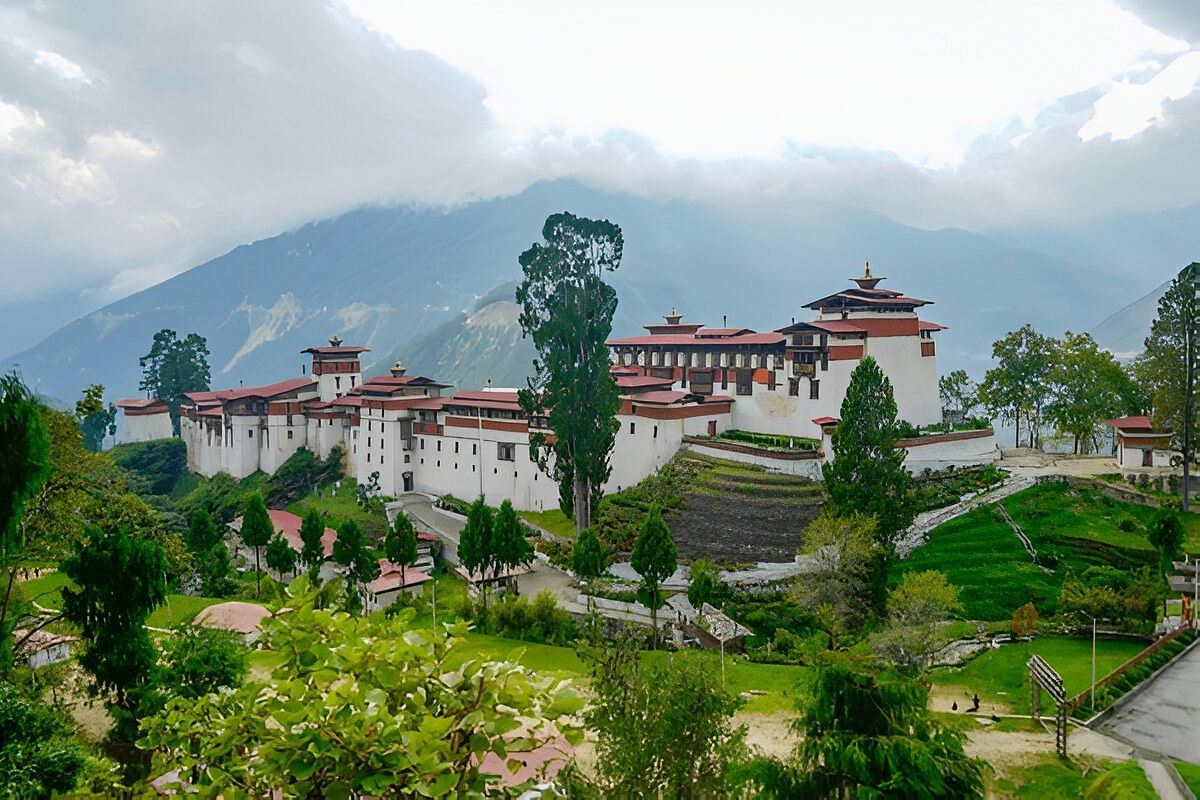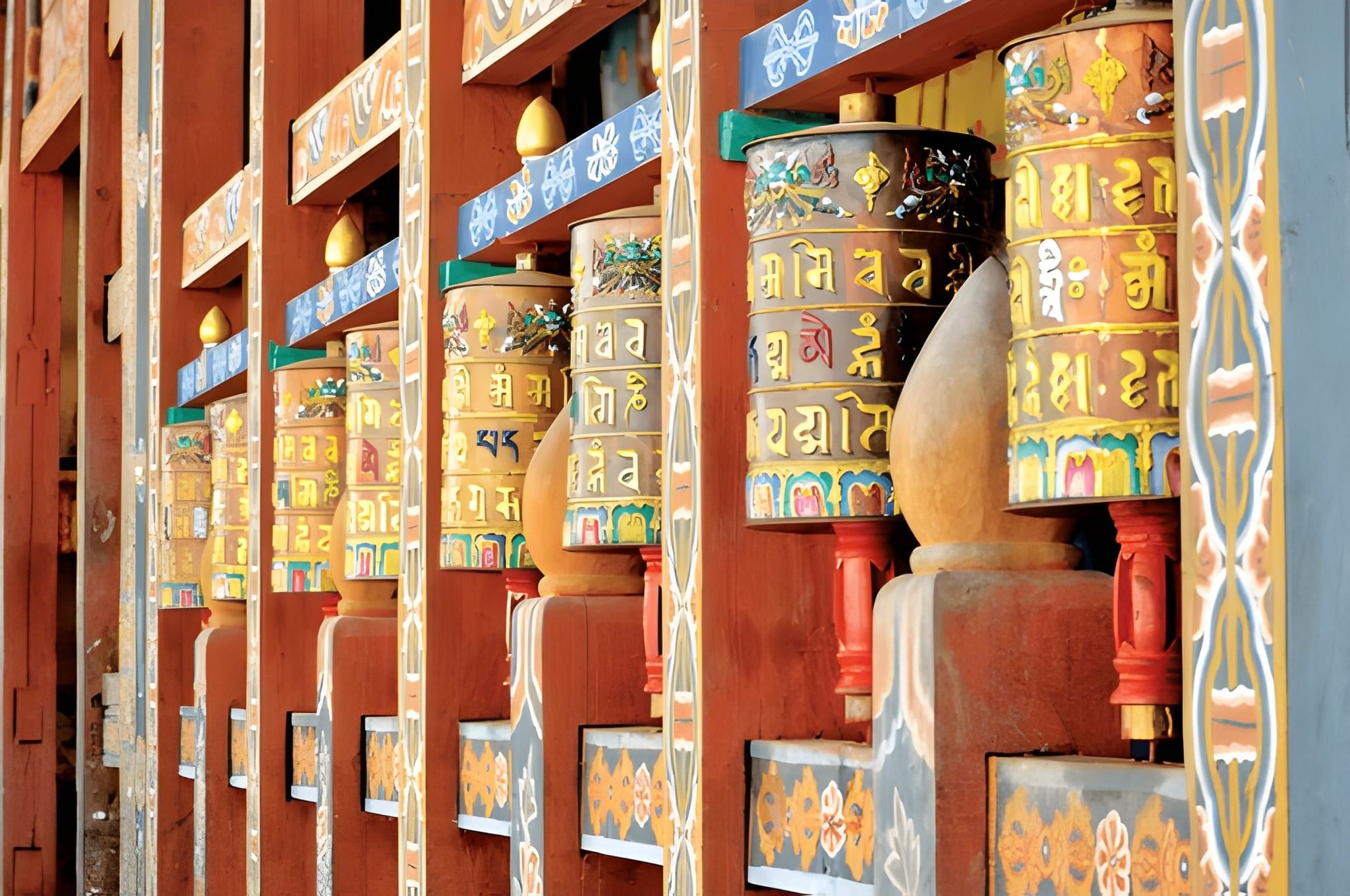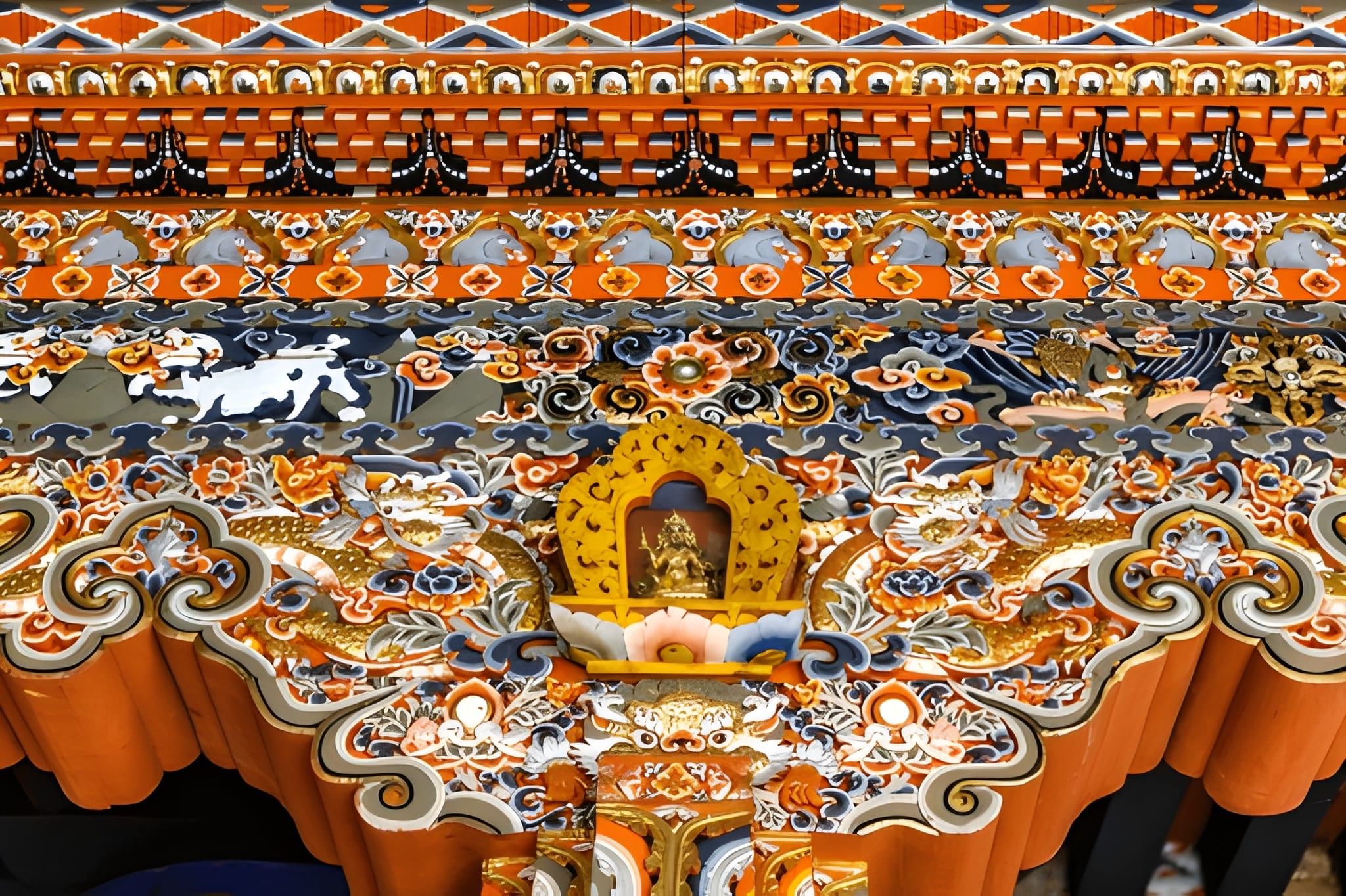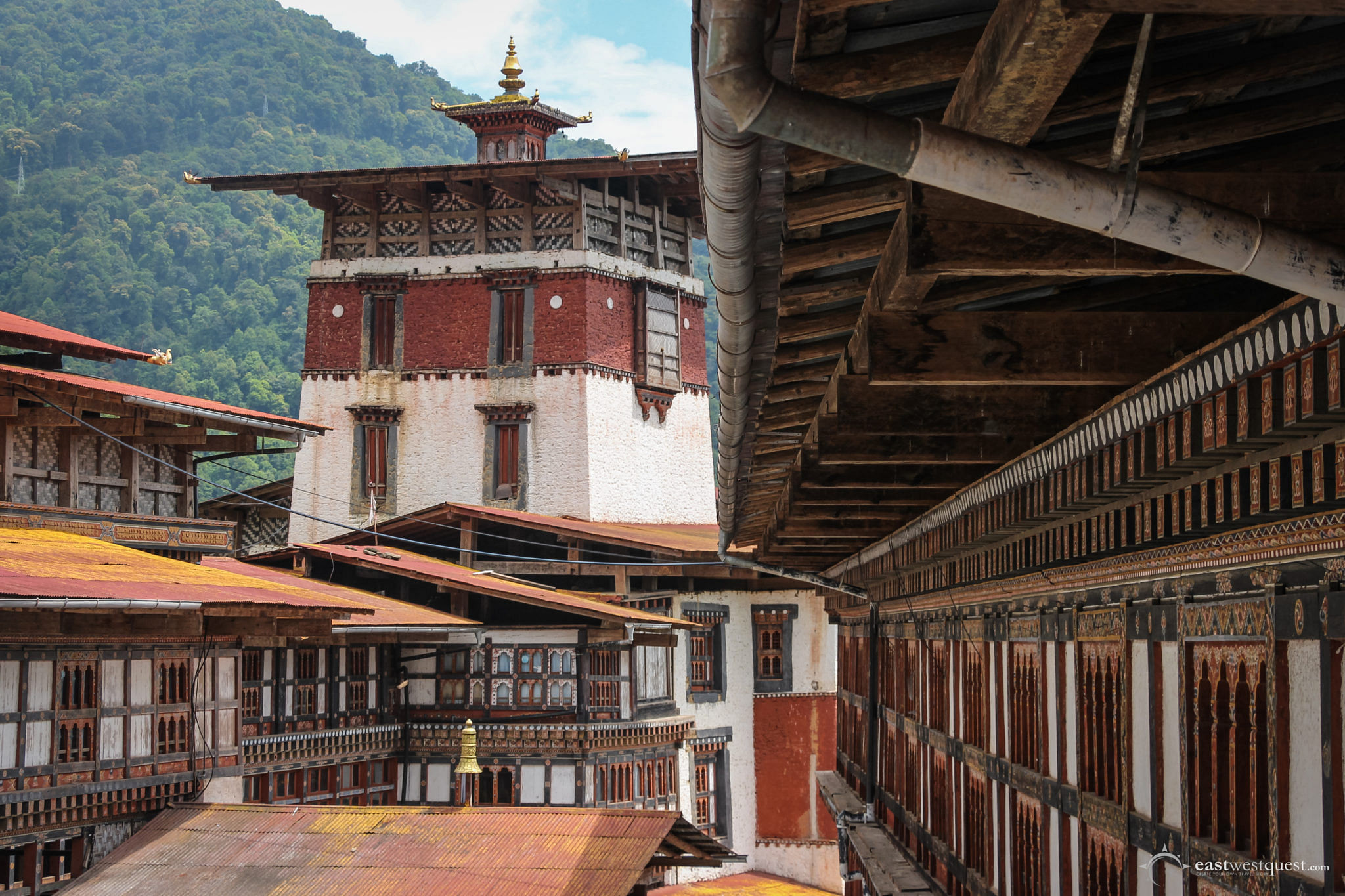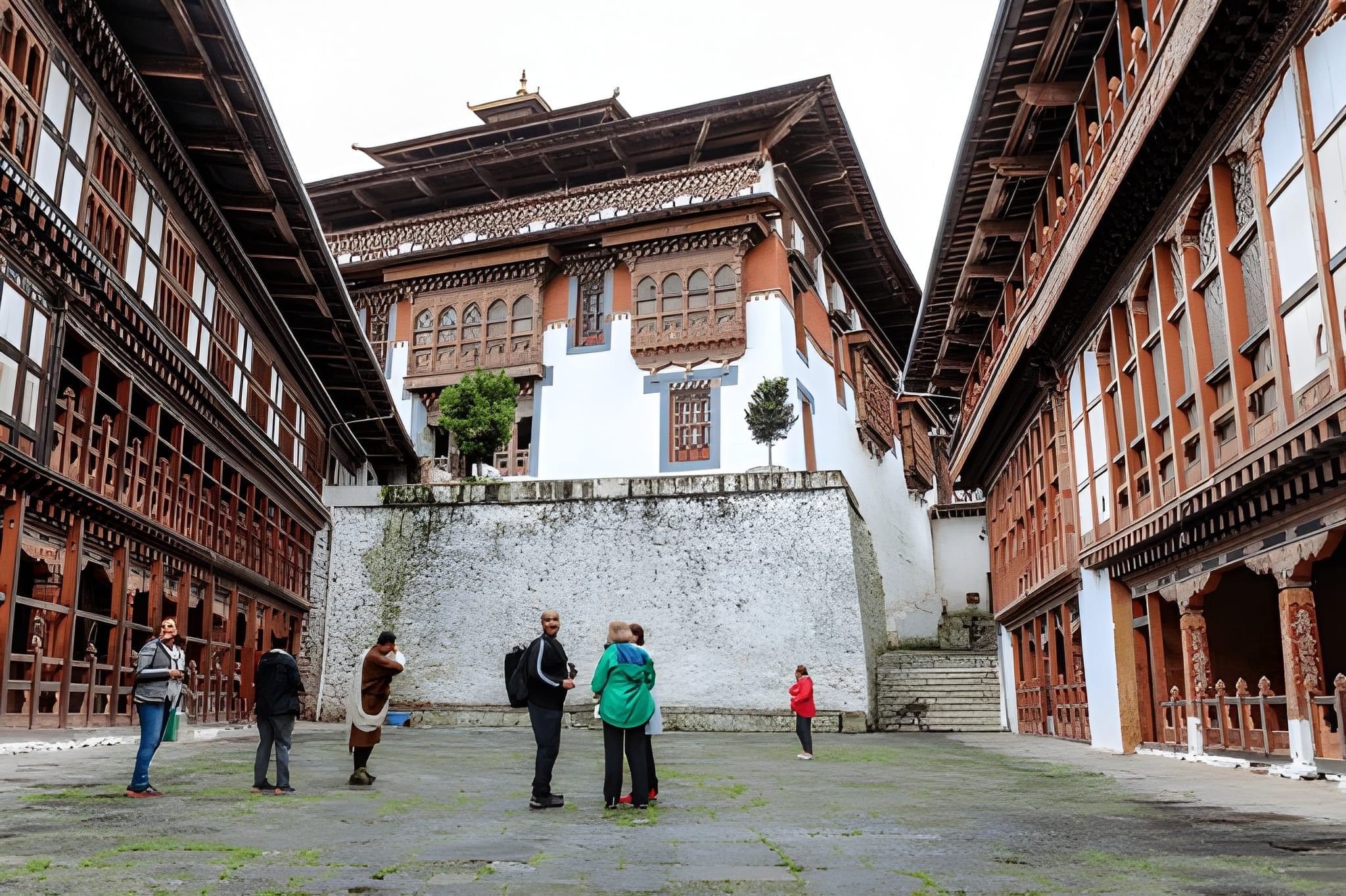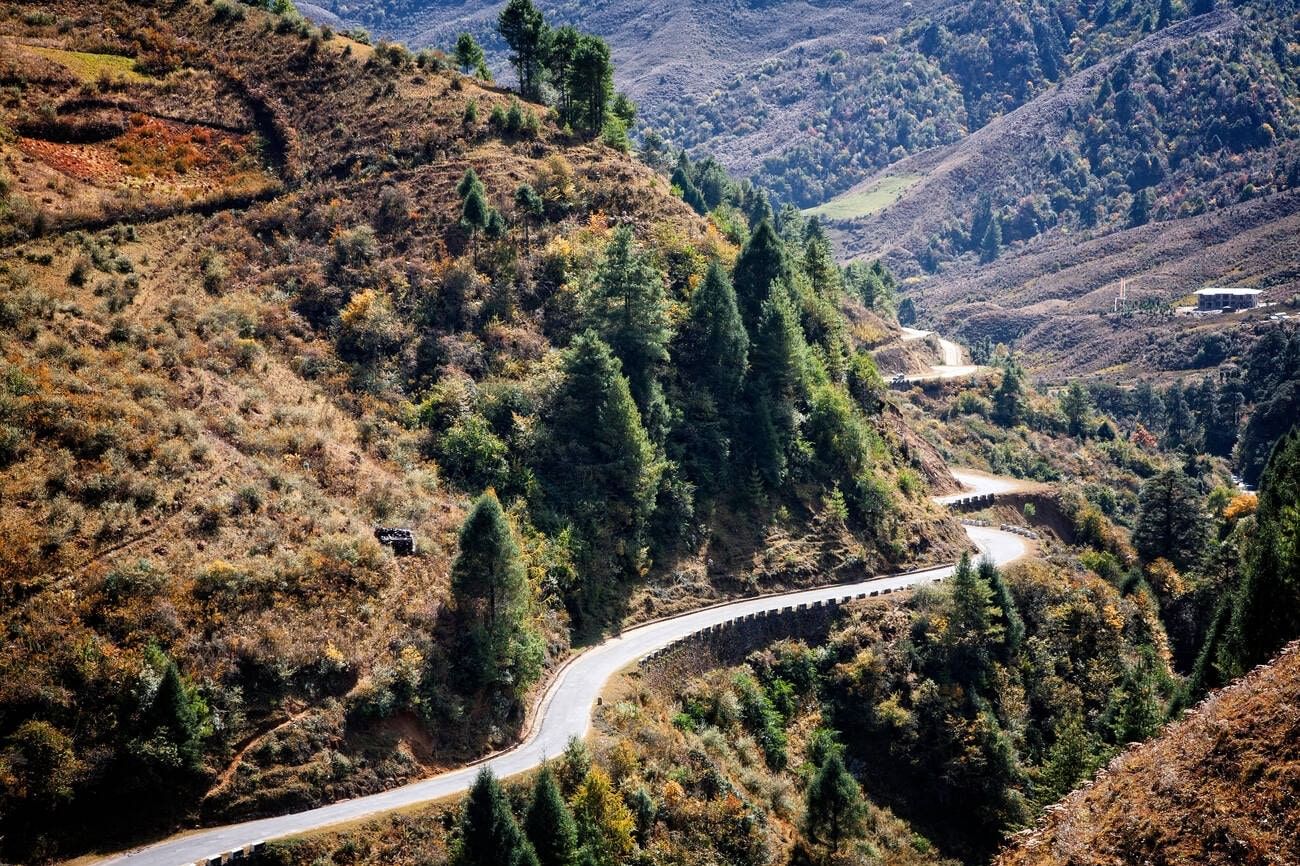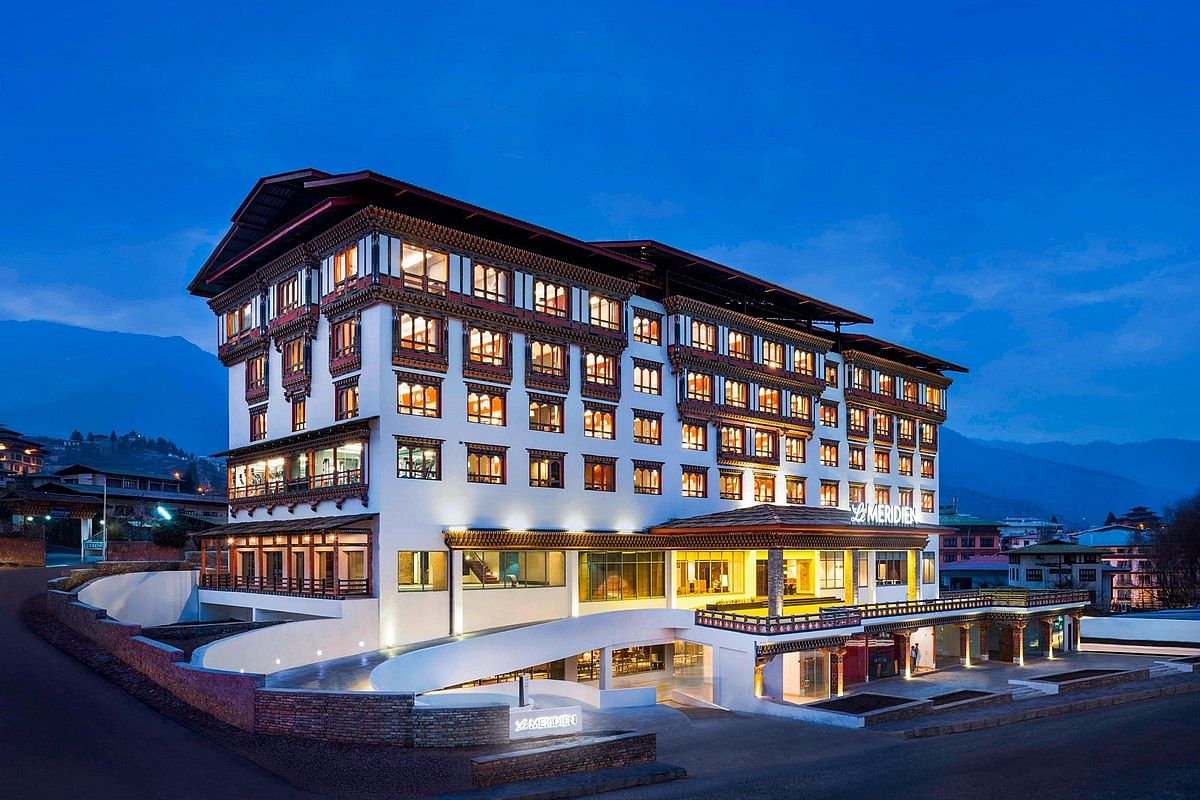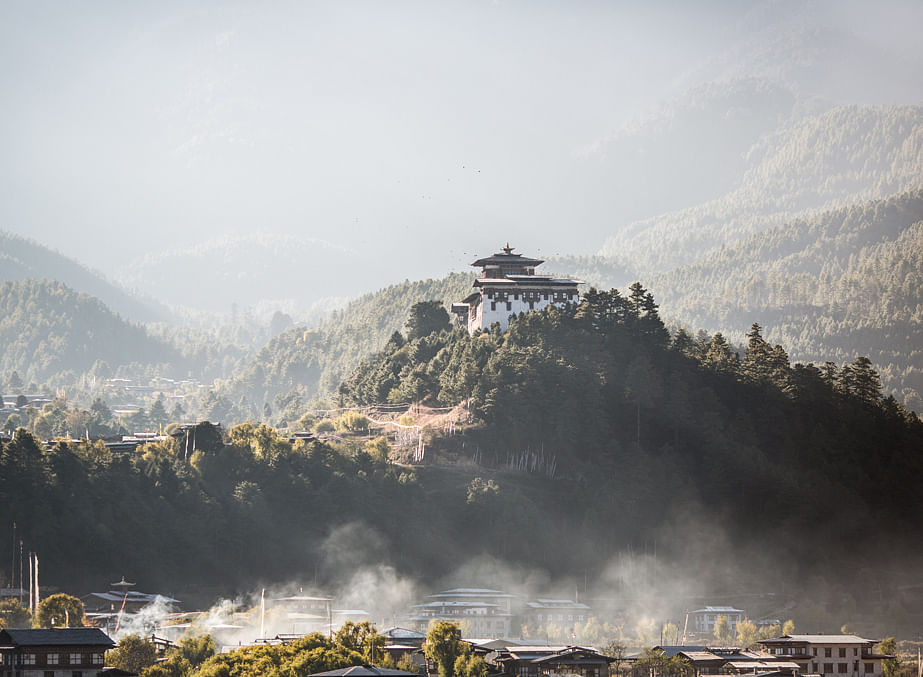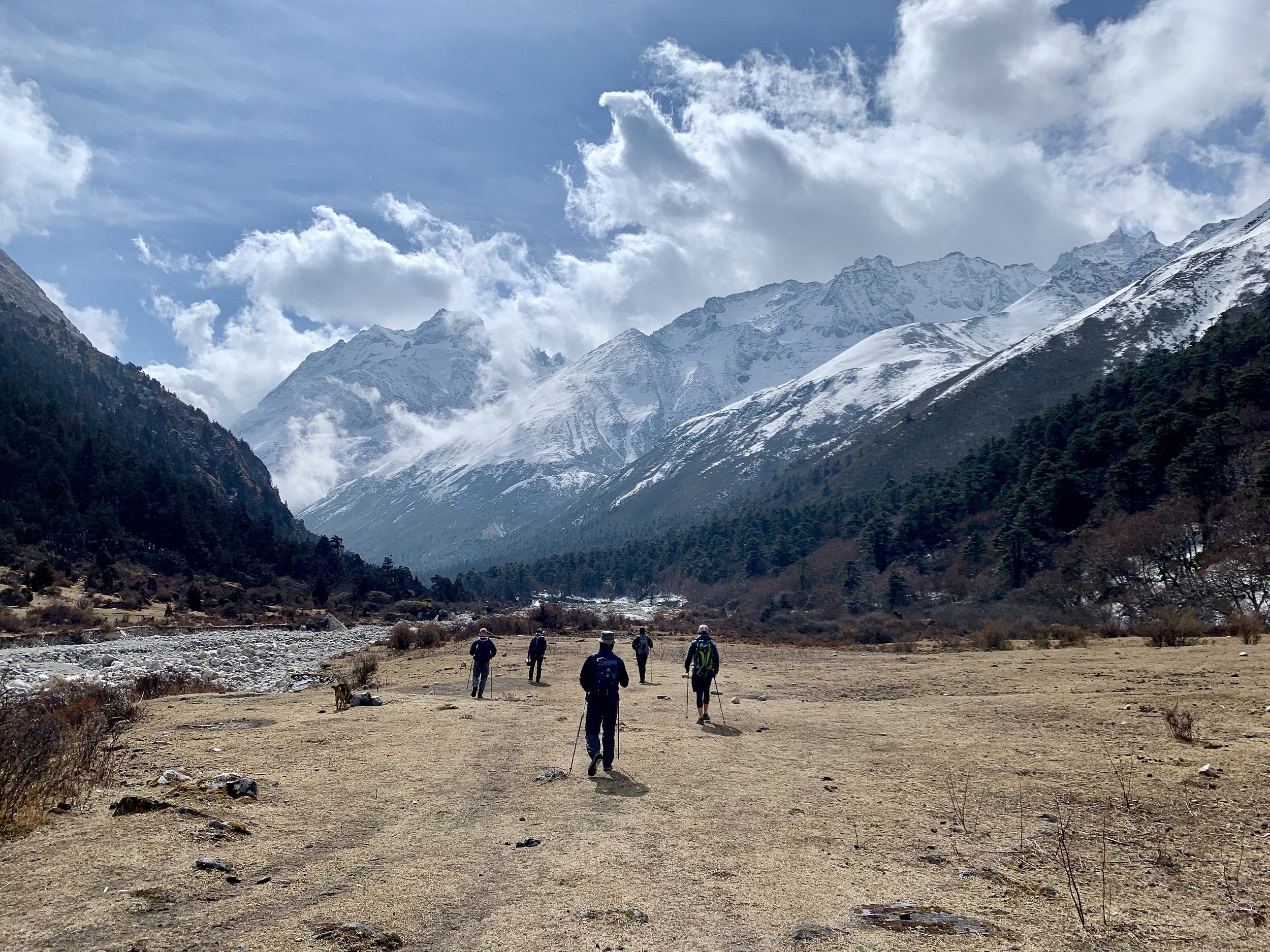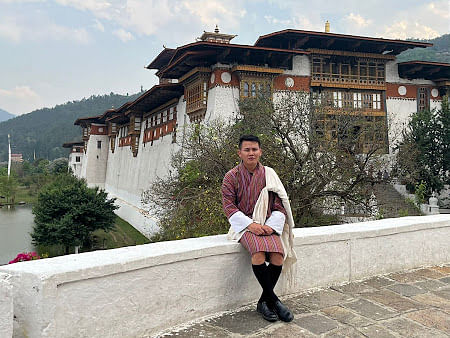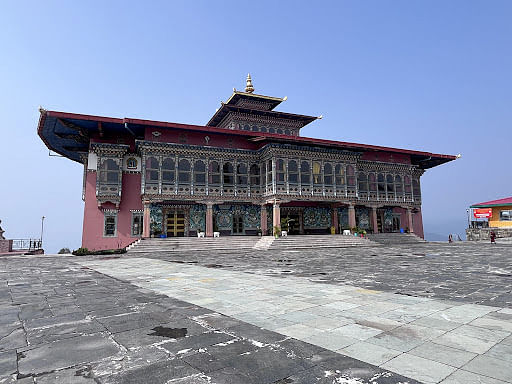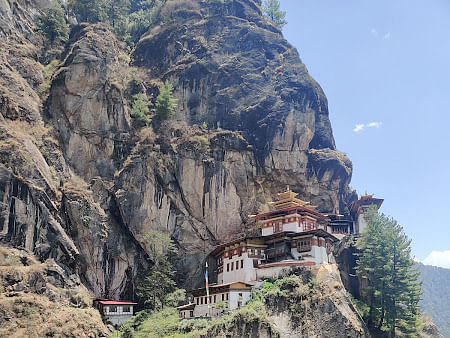Trongsa Dzong is a massive fortress hanging off a cliff in central Bhutan. It's this ancient fortress from 1648 that's literally constructed into a cliff in the middle of Bhutan. When you drive up and lay eyes on it, you'll understand why people travel so far.
The thing is, each king of Bhutan operated this place before sitting on the throne. So it's not merely some random ancient structure. It really signifies.
The fortress sort of spreads out over the mountainside with all of these levels and courtyards. You can walk around in the temples inside, and the vistas down into the valley are quite beautiful. It's still active too, not just standing idle.
If you're wondering about places to visit in Bhutan, add this one. It's less populated than other areas tourists visit, which is nice. You're not elbowing people trying to get a decent photo.
Interested in going? Our Bhutan Tour Packages will get you there. Seriously, it's one of those destinations that looks even better in real life than in photos.
The History of Trongsa Dzong dates back more than 400 years. In the 1500s, a Buddhist monk named Ngagi Wangchuk came to this area looking for a place to meditate. He found a peaceful spot on a ridge and built a small temple. This little temple later became the base for what we now call Trongsa Dzong.
In 1647, Shabdrung Ngawang Namgyal, the man who united Bhutan, ordered the construction of a large fortress here. Over the years, more temples, courtyards, and towers were added until it became one of the biggest dzongs in the country. Every ruler who governed Bhutan from the Wangchuck family first served as the governor of Trongsa before becoming King. That’s why this fortress is sometimes called the “seat of power” in Bhutan.
Today, Trongsa Dzong Bhutan still holds an important place in the country’s heart. It’s not just a building - it’s a reminder of how Bhutan’s royal family rose to lead the nation.
best selling bhutan tour packages
Where Is Trongsa Dzong Bhutan Located?
The Trongsa Dzong Bhutan location is in central Bhutan, in a town called Trongsa. This town is right in the middle of the country, which is why Trongsa Dzong became such an important place. Long ago, anyone who wanted to travel between eastern and western Bhutan had to pass through this region. That made Trongsa a natural meeting point for traders, monks, and even kings.
The fortress stands high above the Mangde River, built on a ridge that offers a stunning view of the green valleys below. When you drive into Trongsa, the first thing you’ll see is this massive white structure stretching along the mountainside. It almost feels like it’s watching over the entire valley - calm, strong, and beautiful.
The Architecture of the Trongsa Dzong
One of the primary reasons to talk about “Trongsa Dzong” is for the architecture. The fortress monastery is a beautiful example of Bhutanese dzong architecture: massive white-washed walls, wooden balconies, intricate wood-carving, courtyards, temples and hallways spread over multiple levels.
Here are some highlights:
- The structure is built on a steep ridge, and the levels of buildings cascade down the hill in tiers. This gives it a fortress-look but also a monastery-look.
- There are many temples within: in total, some 20 or more individual chapels (lhakhangs) and assembly halls.
- The fortress part: the thick walls, the defensive position, the way it overlooks the valley: this is what gives the “fortress monastery” feel.
- The monastery part: monks’ quarters, prayer halls, sacred relics.
- The blend of functions: administration, monastic life, defence and culture.
- Details of woodwork, frescoes, traditional Bhutanese-style windows, and roofs all add to its charm.
So when you walk through the dzong, you see narrow and winding corridors, staircases, courtyards, rooms, temples and views from high above the valley. It is not just one building but a complex that develops across the ridge.
Why is Trongsa Dzong important?
You might ask: Why is Trongsa Dzong important? Here are several reasons:
- Political & Strategic: Because it sat centrally and controlled the east-west route in Bhutan, the Penlop of Trongsa was powerful, and from this fortress the Wangchuck dynasty built its base.
- Religious: It houses a large monastic body (around 200 monks), so it is a religious centre in addition to being administrative.
- Cultural and Architectural: It stands as one of the finest examples of fortress-monastery architecture in Bhutan. Many tourists and architecture-lovers consider it the most impressive dzong in the country.
- Symbolic: It symbolises Bhutan’s heritage-both spiritual and secular-and the coming of modern Bhutan through the monarchy.
- Festival Venue: It hosts one of Bhutan’s important festivals (the Trongsa Tsechu), which brings together community, sacred dance, tradition and visitors.
So for all these reasons: history, location, architecture, culture, religion - this fortress monastery holds a special place in Bhutan’s story.
Things to see inside Trongsa Dzong
When you visit Trongsa Dzong on a tour, here are things you should definitely check out:
- The main courtyards: As you enter, you’ll be in large open spaces surrounded by buildings on multiple levels.
- The temples (lhakhangs): For example, the Dechhog Lhakhang was built in 1853 inside the dzong complex.
- The corridors and staircases: Often narrow, winding and offering views of the ridge and valley.
- The administrative offices and monks’ quarters: Although you may not go into all rooms, part of the feel of the place is the mixture of governance and spiritual life.
- The view from high up: Because of its location, you will have great viewpoints of the valley, the river and the town.
- For a more complete visit, you may also include the nearby Ta Dzong watchtower museum, which sits above the dzong and provides views and historical context.
- The architecture itself: Look for wood-carvings, traditional roofs, and layered structure.
- If you time it right, attend the Trongsa Tsechu festival, which brings colour, masks, monks and community celebrations.
A Trongsa Dzong tour is not just walking through a building-it’s walking through many levels of history, art, religion and governance.
How to Reach Trongsa Dzong
If you’re wondering how to reach Trongsa Dzong, the answer is quite simple. You can travel by road from other major towns in Bhutan. The drive might be long, but it’s one of the most scenic journeys you can take.
- From Thimphu (the capital), it takes around 7–8 hours by car.
- From Paro, it’s about 9 hours.
- From Bumthang, it’s just 2–3 hours.
The roads are winding, but you’ll see beautiful forests, mountain passes, and small villages along the way. Once you reach Trongsa town, the dzong is easy to spot - you can either walk up to it or take a short drive to the entrance. The view from the top is worth every minute of the journey.
Best Time to Visit Trongsa Dzong
For the Best Time to visit Trongsa Dzong, here is simple advice:
- The months of March to May and September to November are recommended because the weather is mild and the skies are clearer.
- Avoid the heavy monsoon months if you can, as roads might be slippery.
- If you want to attend the festival (Trongsa Tsechu), ask locally for dates (usually December or January).
- Early morning or later afternoon visits can give better light for photos and more tranquillity.
Thus, plan your trip in those months if possible for the best experience.
Where to Stay Near Trongsa Dzong Bhutan?
When you plan a visit to Trongsa Dzong, choosing where to stay is an important piece of the puzzle - because the right accommodation can enhance your whole experience. Below are good options and things to consider for staying near the fortress. Here are several well-rated places to stay in and around the town of Trongsa, close to Trongsa Dzong Bhutan:
- Yangkhil Resort: Located about 2 km outside Trongsa town. The resort has 21 spacious rooms with a modern-traditional mix (wood flooring, good insulation). It offers great views of Trongsa Dzong and the Mangde River.
- Why pick it: If you want a slightly upscale stay, a quieter setting, a nice garden and views.
- Tip: Since it’s slightly outside the town, check how you’ll get to/from the fortress in the morning and for dinner.
- Puenzhi Guest House: A guest-house style place about 3 km from downtown Trongsa, set on a gently sloping hill with superb views of the valley, the fortress ridge, and the surrounding Black Mountain range.
- Why pick it: More budget-friendly, very scenic, good for nature lovers, simple but comfortable.
- Tip: Rooms may be simpler than a resort, so if you need luxury or full hotel amenities, you may look higher up.
- Tashi Ninjay Guest House: Family-run guesthouse in the town of Trongsa, located on a steep hill giving strong views of Trongsa Dzong. It’s simple but authentic.
- Why pick it: If you want to stay right in town, be close to restaurants, the local bazaar, and the fortress within walking distance.
- Tip: Because of its hill setting, be aware that if you have luggage or mobility issues, stairs and uphill walks might be involved.
- Willing Resort: A more luxurious resort option near Trongsa. Features include a spa, a garden, good views, and modern amenities.
- Why pick it: If you’re willing to spend more for comfort, amenities like a spa, and want a resort feel rather than a basic stay.
- Tip: The price will be higher - factor that into your budget.
If someone asks, “Why should I visit Trongsa Dzong?” - the answer is simple. Because it’s more than a monument. It’s a story carved into stone and wood. It’s where Bhutan’s kings began their journey, where prayers have echoed for hundreds of years, and where the mountains meet the sky.
Visiting Trongsa Dzong helps you understand Bhutan - not through books, but by standing in the place where its history was born.
So, if you ever plan a trip to this peaceful Himalayan kingdom, make sure to include Trongsa Dzong in your list. Take your time to walk its courtyards, talk to the monks, and feel the calm energy it carries.
Because once you’ve seen it, Trongsa Dzong will stay in your heart forever - strong, beautiful, and full of stories that never fade.




